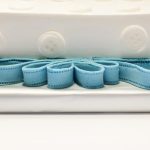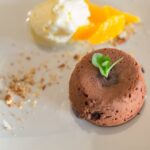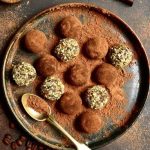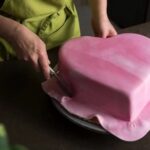Are you looking to elevate your cake decoration skills? Learning how to mix icing sugar for cake decoration is a fundamental step in achieving professional-looking baked goods.
Icing sugar, also known as powdered sugar or confectioner’s sugar, plays an essential role in adding sweetness and texture to cakes, as well as providing a smooth surface for decorating. In this article, we will delve into the art of mixing icing sugar for cake decoration and explore the various techniques and tips to help you achieve stunning results.
Icing sugar comes in different variations, such as finely ground or mixture with cornstarch. These variations can affect the texture and consistency of the icing when mixed.
Understanding these differences can greatly enhance your cake decorating skills and allow you to choose the right type of icing sugar for your specific needs. Whether you’re looking for a smoother finish or a thicker consistency, knowing the different types of icing sugar available will give you more control over your cake decoration process.
Different types of tools and ingredients are needed to successfully mix icing sugar for cake decoration, including measuring cups, mixing bowls, sifters, vanilla extract, and food coloring. Knowing where to find these tools and ingredients can make the mixing process much more manageable.
In the next sections of this article, we will provide detailed information on how to prepare these items for mixing and where to source them so that you can get started on creating beautiful cake decorations without any hassle.
Understanding Icing Sugar
Icing sugar, also known as powdered sugar or confectioner’s sugar, is a crucial ingredient in cake decoration. It is finely ground granulated sugar mixed with a small amount of cornstarch to prevent caking. The main purpose of icing sugar in cake decoration is to create a smooth and creamy frosting or icing that can be easily spread or piped onto cakes, cupcakes, and other baked goods.
There are different variations of icing sugar available, each with its own unique characteristics. Some common types include regular powdered sugar, which is the most commonly used for baking and cake decorating, and superfine powdered sugar, which has a finer texture and dissolves more quickly. Understanding the differences between these variations is important when mixing icing sugar for cake decoration as it can impact the overall texture and appearance of the frosting or icing.
When preparing to mix icing sugar for cake decoration, there are a few essential tools and ingredients needed. These may include a sifter or fine-mesh strainer to remove any lumps from the powdered sugar, a mixing bowl, an electric mixer or whisk for blending the ingredients together, and any additional flavorings or colorings desired for the frosting or icing.
To properly prepare the icing sugar for mixing, start by sifting the powdered sugar to remove any clumps and ensure a smooth consistency. This step is crucial in achieving a creamy and lump-free frosting or icing. Additionally, make sure that all other ingredients such as butter, milk, and flavorings are at room temperature before incorporating them with the icing sugar. Room temperature ingredients blend more smoothly and create a better final product.
By understanding what icing sugar is and its purpose in cake decoration, along with knowing the different variations available, individuals can effectively prepare this essential ingredient for mixing into delightful frostings or icings. Remembering to sift the powdered sugar before starting to mix it will result in smoother textures while ensuring all additional ingredients are at room temperature will lead to better blends making their baked goods even more scrumptious.
Tools and Ingredients
When it comes to mixing icing sugar for cake decoration, having the right tools and ingredients is crucial to achieving the desired result. To begin, the main ingredient you will need is, of course, icing sugar. This fine powdered sugar is essential for creating smooth and creamy icing that can be easily spread or piped onto a cake.
In addition to icing sugar, you will also need other ingredients such as flavor extracts (vanilla, almond, etc.), food coloring, and water or milk. These additional ingredients are used to enhance the flavor and appearance of the icing sugar, allowing for endless creativity in your cake decorating.
As for tools, a stand mixer or electric hand mixer can make the process of mixing icing sugar much easier and quicker. A set of mixing bowls in various sizes will also come in handy, as well as measuring cups and spoons to ensure accurate portions of each ingredient. And don’t forget about spatulas and piping bags for applying the mixed icing sugar onto your cake.
If you’re unsure about where to find these tools and ingredients, most grocery stores carry a wide variety of icing sugars along with food coloring gels and sprinkles for decorating. Specialty baking supply stores or online retailers may offer an even wider selection of options if you’re looking for something specific.
With the right tools and ingredients on hand, you’ll be ready to mix your icing sugar with confidence and get creative with your cake decoration.
Preparation
Step-by-Step Instructions
To prepare icing sugar for cake decoration, start by gathering all the necessary tools and ingredients. You will need a mixing bowl, a whisk or electric mixer, icing sugar, liquid (such as water or milk), and any desired flavoring or coloring agents. Make sure the mixing bowl and whisk are clean and dry before starting.
Once you have all your tools and ingredients ready, sift the icing sugar into the mixing bowl to ensure that it is free of lumps. This will make it easier to achieve a smooth consistency when mixing. If you plan to add any flavoring or coloring agents, now is the time to do so.
Next, slowly add in the liquid while continuously mixing the icing sugar. It’s important to do this gradually to avoid adding too much liquid at once, which could result in a runny consistency. Keep mixing until all the ingredients are well combined and the icing sugar reaches your desired thickness.
Tips for Proper Preparation
One important tip for preparing icing sugar for cake decoration is to start with small amounts of liquid and adjust as needed. It’s much easier to add more liquid if the mixture is too thick than it is to try and thicken an overly runny mix.
Additionally, be mindful of the type of liquid you use as different liquids can affect both the flavor and texture of your icing sugar. For example, using milk instead of water can result in a richer flavor but might also require refrigeration due to its dairy content.
By following these step-by-step instructions and tips for proper preparation, you can ensure that your icing sugar is ready for mixing while achieving just the right consistency for cake decoration.
Mixing Techniques
Icing sugar is an essential ingredient in cake decoration, as it provides the sweet and smooth texture that enhances the overall appearance and taste of a cake. When mixed properly, icing sugar can be easily molded and shaped, allowing for intricate designs and decorative details. There are different types of icing sugar available, including powdered sugar, confectioner’s sugar, and frosting sugar, each with its own unique properties and uses in cake decorating.
To ensure that your cake decorations turn out perfectly, it’s crucial to understand how to mix icing sugar correctly. Firstly, gather all the necessary tools and ingredients before you begin mixing.
You will need a sifter or fine-mesh strainer to remove any lumps from the icing sugar, a mixing bowl to combine the ingredients, a whisk or hand mixer for blending, and any additional coloring or flavoring agents you wish to incorporate into the mixture. These tools and ingredients can typically be found at local grocery stores or baking supply shops.
Once you have all the tools and ingredients prepared, follow these step-by-step instructions on how to mix icing sugar for cake decoration: Sift the icing sugar into a clean mixing bowl to remove any lumps and create a smooth consistency. Add any desired flavorings or colorings at this stage if you want to enhance the taste or appearance of your icing.
Using a whisk or hand mixer on low speed, gradually combine the icing sugar with any liquid ingredients until it reaches your desired consistency.
| Tools Needed | Ingredients Needed |
|---|---|
| Sifter or fine-mesh strainer | Icing Sugar/powdered sugar |
| Mixing Bowl | Liquid Ingredients (water/milk) |
| Whisk or Hand Mixer | Coloring/ Flavoring Agents (optional) |
Adjusting Consistency
Adjusting the consistency of your icing sugar is crucial in achieving the perfect texture for cake decoration. Whether you’re going for a smooth, spreadable consistency or a thicker, pipable texture, knowing how to adjust the consistency of your icing sugar can make all the difference in your final product.
Tips and Tricks for Adjusting Consistency
One of the most effective ways to adjust the consistency of your icing sugar is by adding small amounts of liquid at a time until you reach your desired texture. For a thicker consistency, use less liquid, and for a thinner consistency, add more liquid. Common options for liquids include water, milk, or flavor extracts – depending on the flavor profile you want to achieve.
Another tip for adjusting consistency is to incorporate small amounts of additional icing sugar if your mixture becomes too thin. This method allows you to balance out any excess liquid while maintaining the sweetness and texture of your icing.
Common Mistakes to Avoid
One common mistake when adjusting the consistency of icing sugar is adding too much liquid at once. This can result in an overly runny mixture that may be difficult to fix without adding more dry ingredients than intended. It’s important to take it slow and gradually add liquid while continuously checking the texture.
Additionally, overlooking the impact of temperature on viscosity can also lead to consistency issues with icing sugar. For example, working with warmer ingredients will result in a thinner consistency compared to working with cooler ingredients. Being mindful of these factors will ensure that you achieve the perfect consistency for your cake decoration needs.
By understanding how to adjust the consistency of your icing sugar, you’ll have more control over its application and overall aesthetic appeal on cakes and other baked goods. Keep these tips in mind as you experiment with different textures and designs in your next baking project.
Coloring and Flavoring
When it comes to cake decoration, adding color and flavor to your icing sugar can take your creations to the next level. Whether you’re aiming for a vibrant rainbow cake or a subtle touch of vanilla in your frosting, mastering the art of coloring and flavoring icing sugar is essential. Here’s how to add that extra personal touch to your sweet creations.
First and foremost, it’s important to note that not all coloring and flavoring options are created equal. When it comes to coloring, some bakers prefer natural options such as fruit juices, vegetable powders, or food coloring derived from plant sources. On the other hand, artificial food dyes are also commonly used due to their vibrant and consistent results. It ultimately depends on your personal preference and the specific outcome you are trying to achieve.
In terms of flavoring, common choices include vanilla extract, almond extract, citrus zest, or flavored syrups. Each option imparts its own unique taste profile, so it’s important to consider how the flavor will complement the overall taste of the cake. Additionally, be cautious with the amount of liquid flavorings added as they can affect the consistency of the icing sugar.
Overall, experimenting with different colors and flavors can result in stunning and delicious creations. Whether you opt for natural or artificial options, mixing icing sugar for cake decoration allows for endless possibilities in customizing your baked goods.
| Coloring Options | Flavoring Options |
|---|---|
| Natural: Fruit juices, vegetable powders | Natural: Vanilla extract, almond extract |
| Artificial: Food coloring | Artificial: Flavored syrups |
Application
When it comes to applying the mixed icing sugar onto a cake, there are a few tips and techniques to keep in mind to achieve the best results. One important thing to consider is the consistency of the icing sugar. It should be smooth and spreadable but not too runny.
If it’s too thick, you can add a small amount of milk or water to thin it out, and if it’s too thin, you can add more icing sugar. The key is to achieve a texture that allows for easy application without dripping off the sides of the cake.
There are various decorative techniques and tools that can be used when applying icing sugar to a cake. One popular method is piping, which involves using a piping bag with different nozzles to create intricate designs or written messages on the cake. This technique requires some practice but can result in beautiful and professional-looking decorations. Another option is using offset spatulas or butter knives to spread the icing sugar evenly across the cake’s surface, creating a smoother finish.
It’s essential to handle the cake carefully when applying the icing sugar to avoid smudging or messing up any existing decorations. Also, ensure that the cake is completely cooled before applying any icing sugar as this will prevent it from melting or becoming runny. With these application tips in mind, anyone can effectively decorate a cake with their mixed icing sugar, adding a personal touch and creativity to their baked creations.
Conclusion
In conclusion, mastering the art of mixing icing sugar for cake decoration can truly elevate the presentation and overall appeal of your baked creations. As outlined in this article, understanding the purpose of icing sugar, familiarizing oneself with the tools and ingredients needed, and learning the proper preparation and mixing techniques are essential steps in achieving a smooth and delightful icing for your cakes.
By adjusting the consistency, experimenting with coloring and flavoring, and exploring various application methods, you can truly unleash your creativity in cake decorating.
When it comes to mixing icing sugar for cake decoration, it’s important to remember that practice makes perfect. Do not be afraid to experiment with different techniques and flavors to find what works best for you. Whether you prefer a simple yet elegant design or something more intricate and colorful, knowing how to mix icing sugar effectively will give you the confidence to create stunning cakes for any occasion.
So grab your tools and ingredients, follow the tips provided in this article on how to mix icing sugar for cake decoration, and let your imagination run wild. With patience and creativity, you’ll soon discover that decorating cakes with homemade mixed icing sugar can be both a fun and rewarding experience. Go ahead and dazzle your friends and family with beautifully decorated cakes that taste as good as they look.
Frequently Asked Questions
How Do I Use Icing Sugar to Decorate a Cake?
To use icing sugar to decorate a cake, start by sifting the sugar to remove any lumps. Then, sprinkle it over the cake using a fine mesh sieve or shaker. You can also use stencils to create decorative patterns.
How Do You Mix Icing Sugar With Color?
Mixing icing sugar with color is easy. Simply add a small amount of food coloring to the sugar and mix it well until the color is evenly distributed. Add more coloring if you want a deeper shade, and less for a lighter one.
How Do You Decorate With Powdered Sugar?
Decorating with powdered sugar is simple yet effective. Place a stencil or cut-out design on top of your dessert, then sift powdered sugar over it using a fine mesh sieve or shaker. Carefully lift the stencil to reveal your beautiful decoration.

Welcome to my blog about home and family. This blog is a place where I will share my thoughts, ideas, and experiences related to these important topics. I am a stay-at-home mom with two young children. I hope you enjoy reading it! and may find some helpful tips and ideas that will make your home and family life even better!





